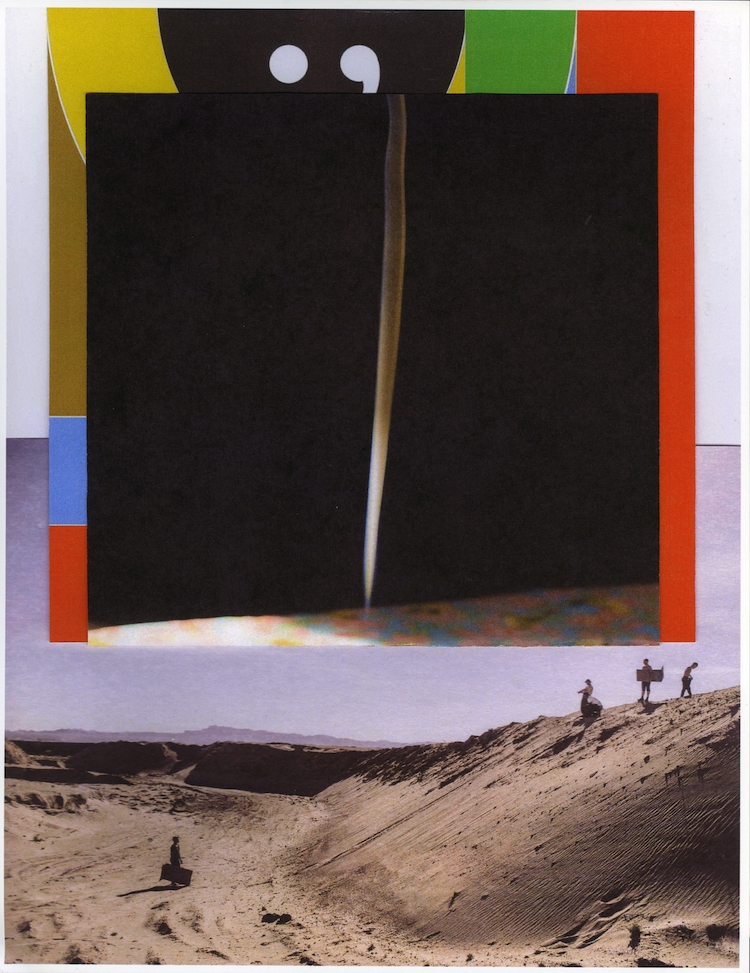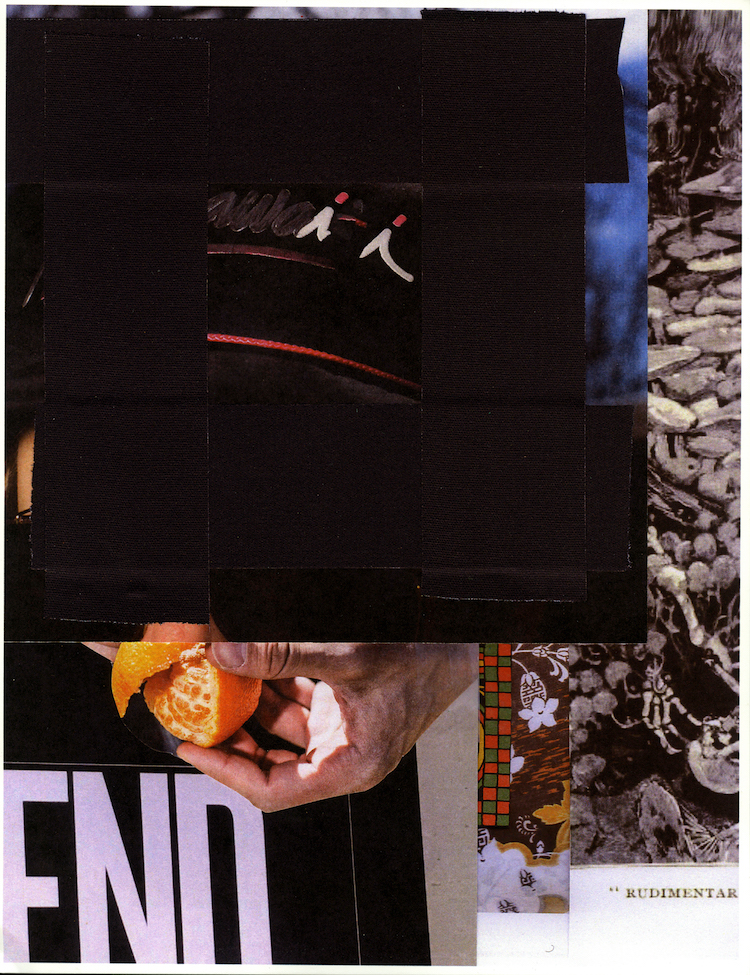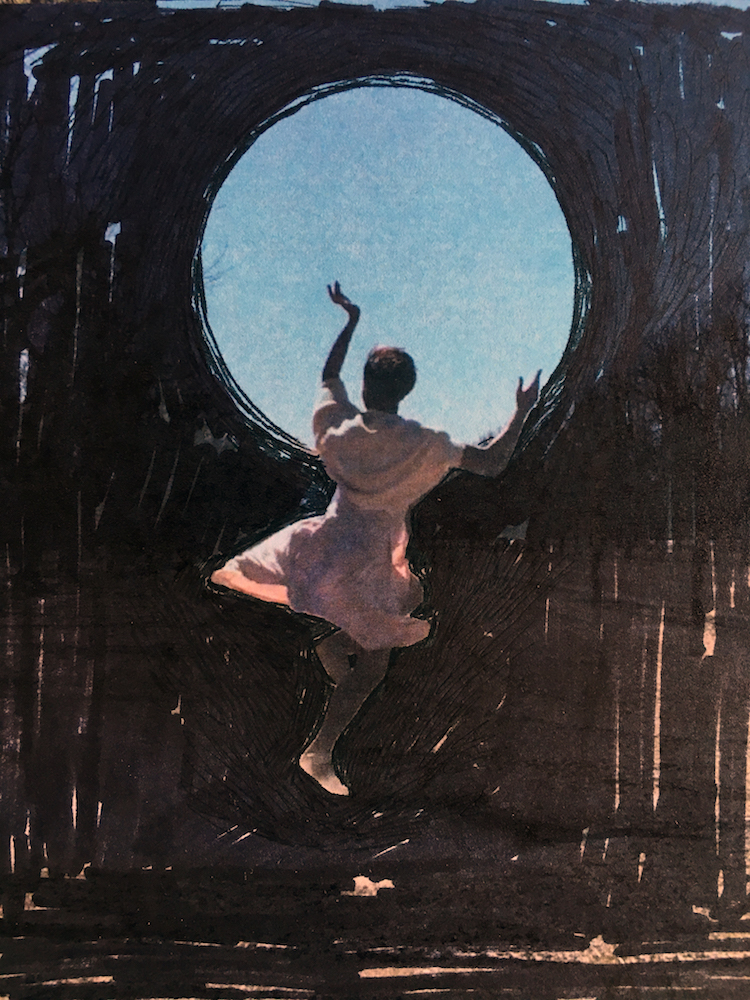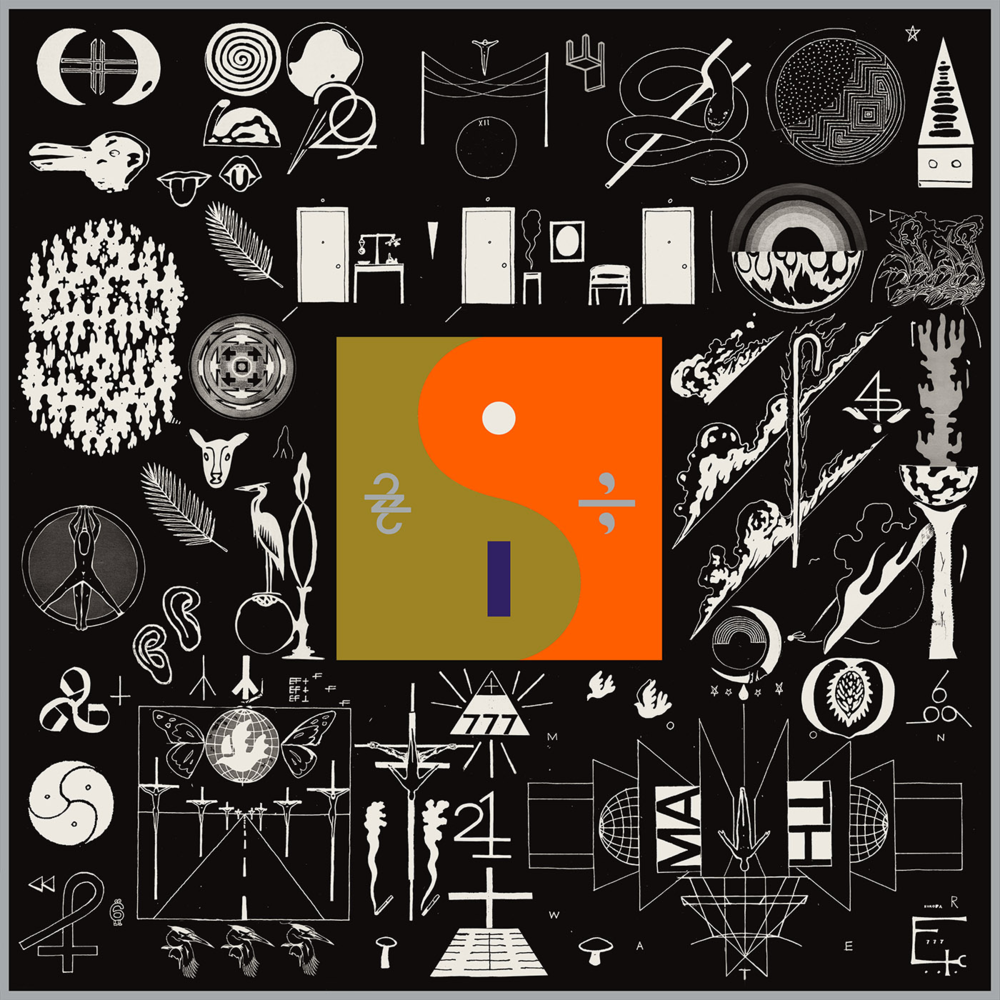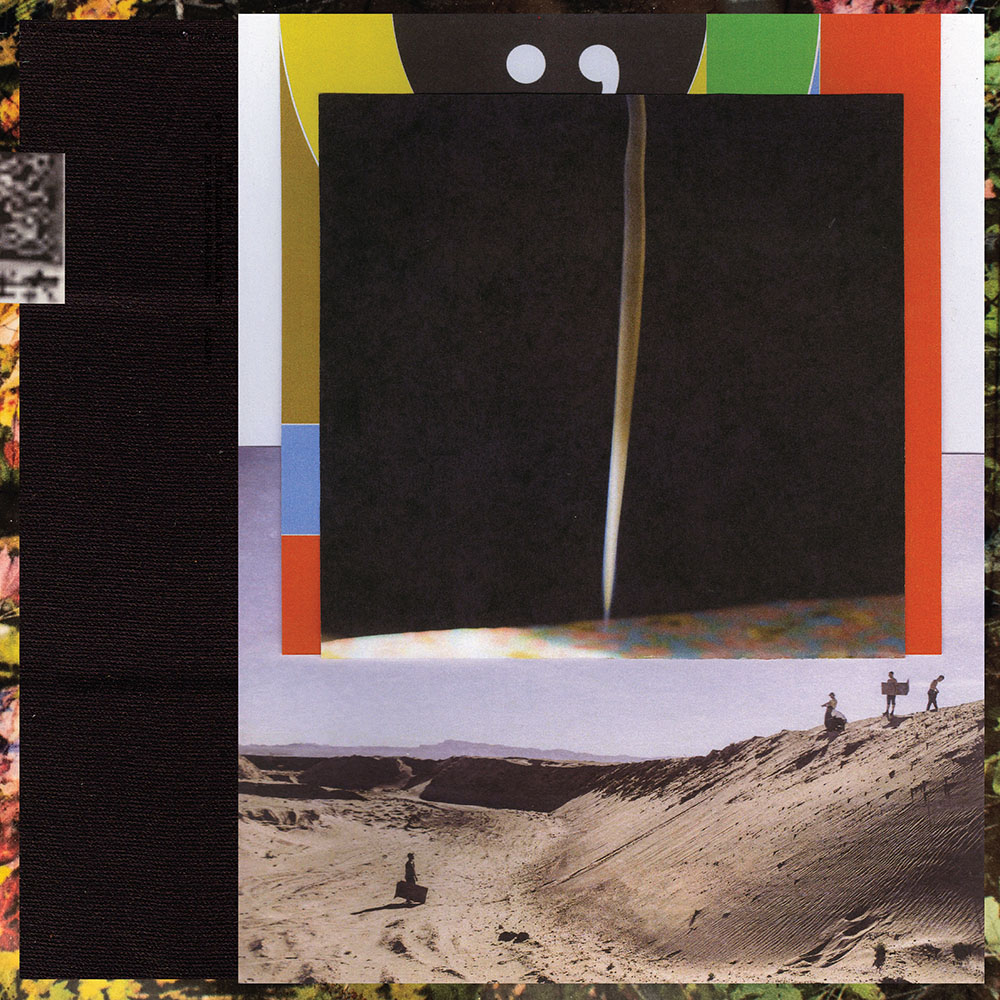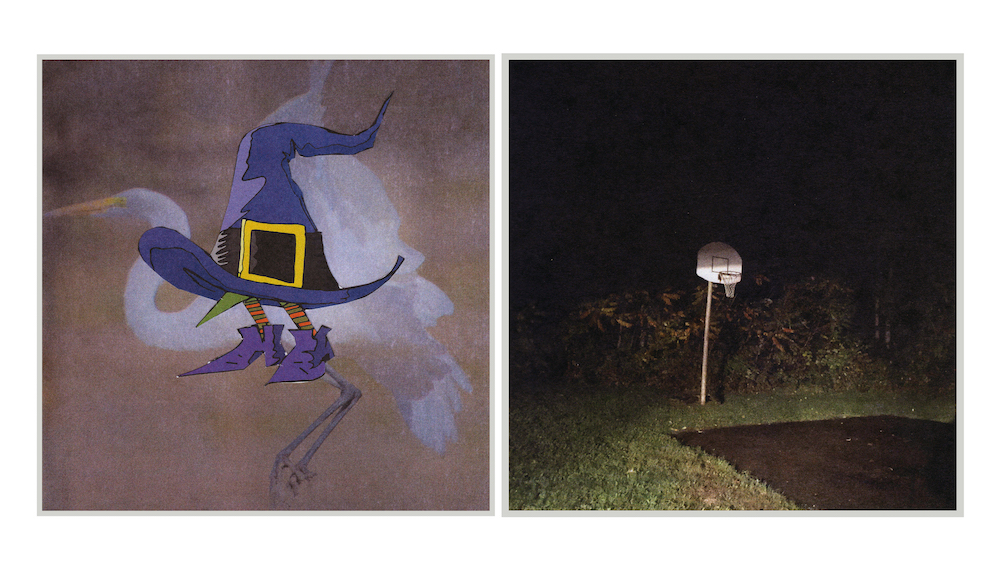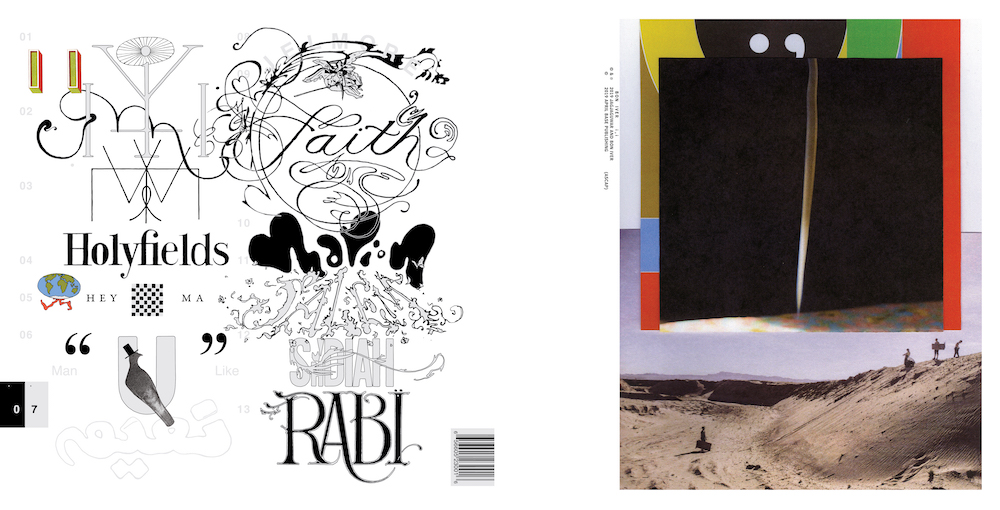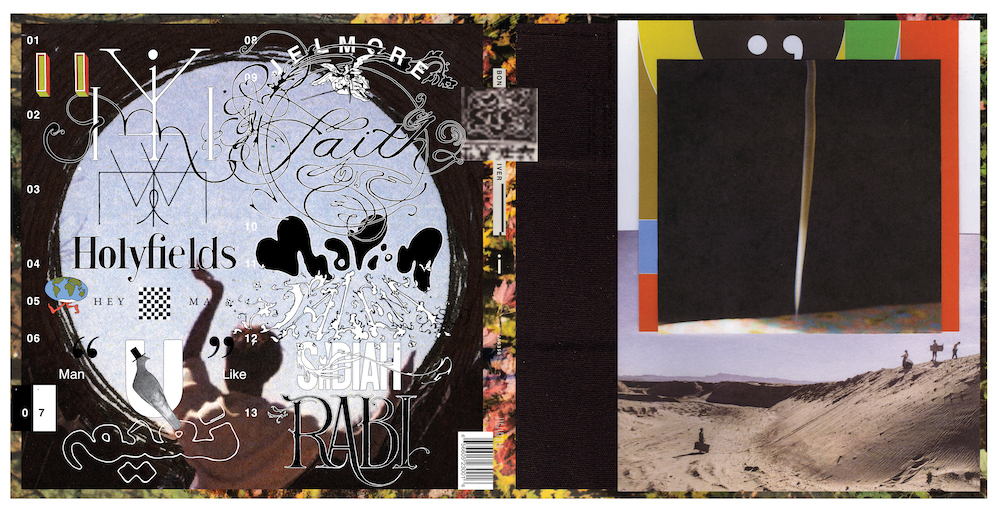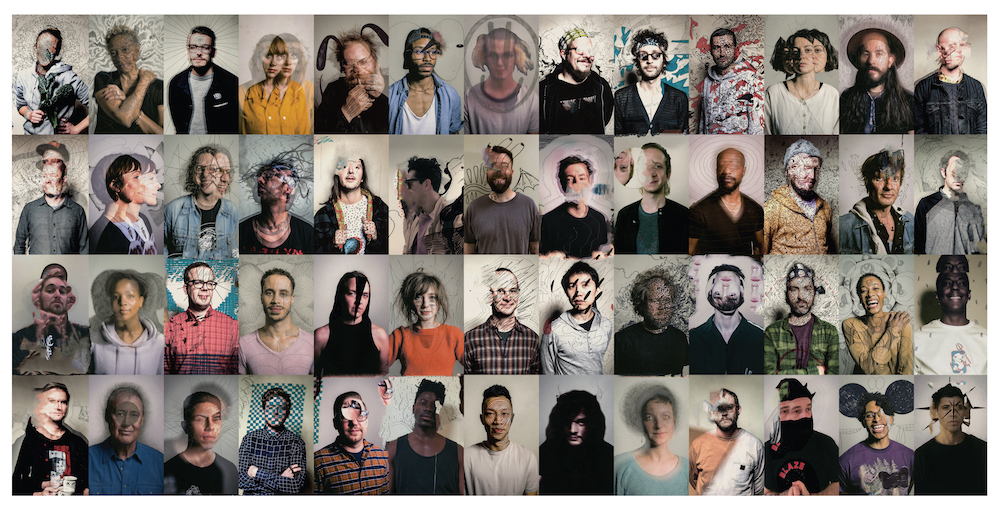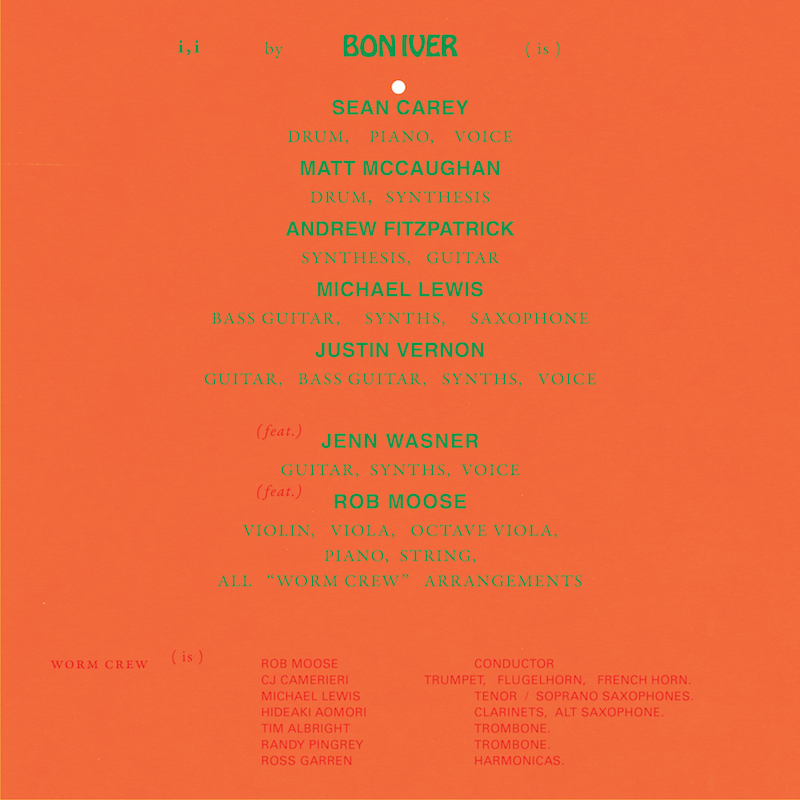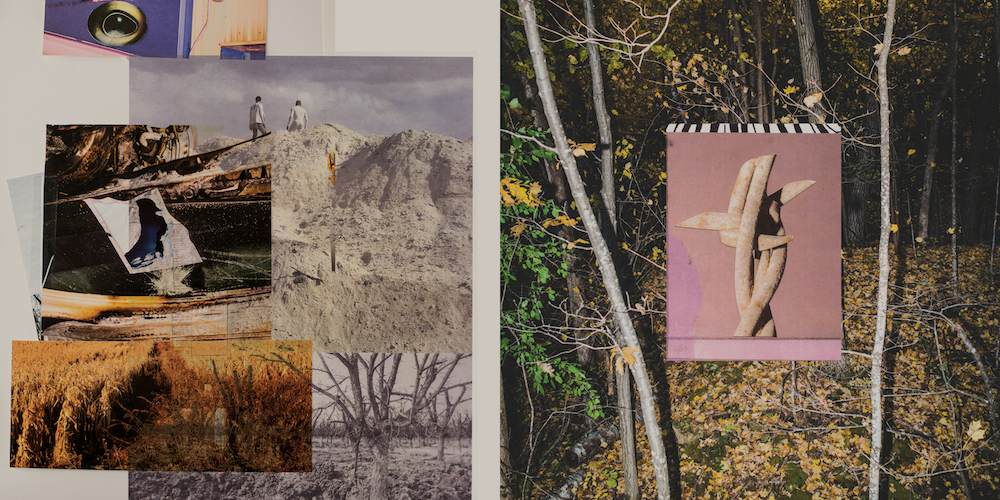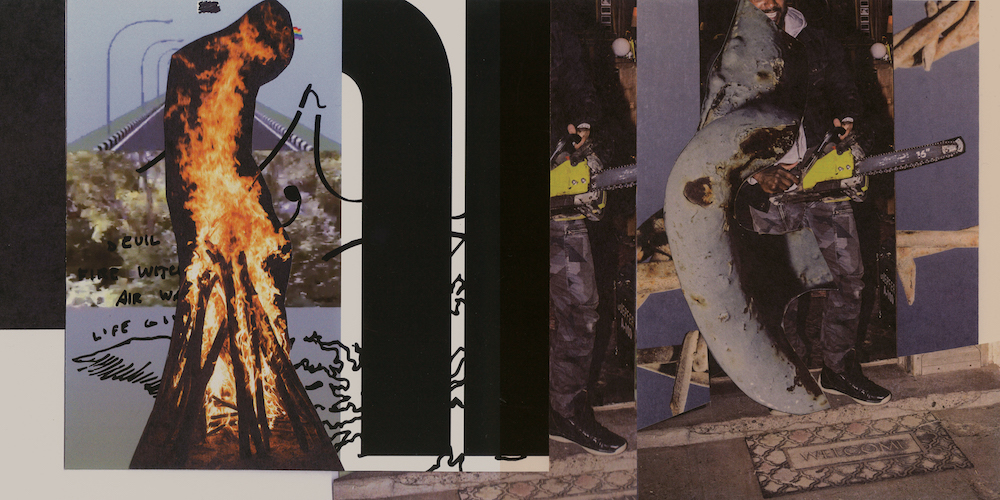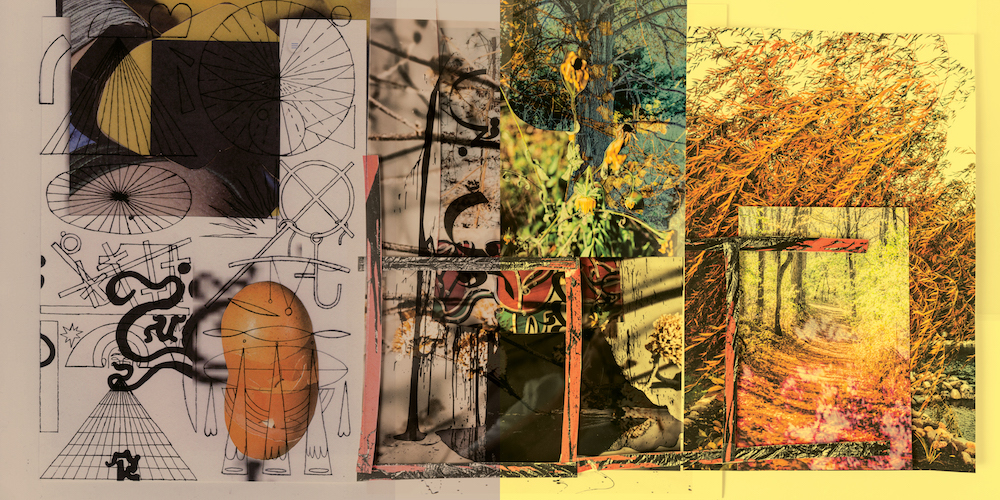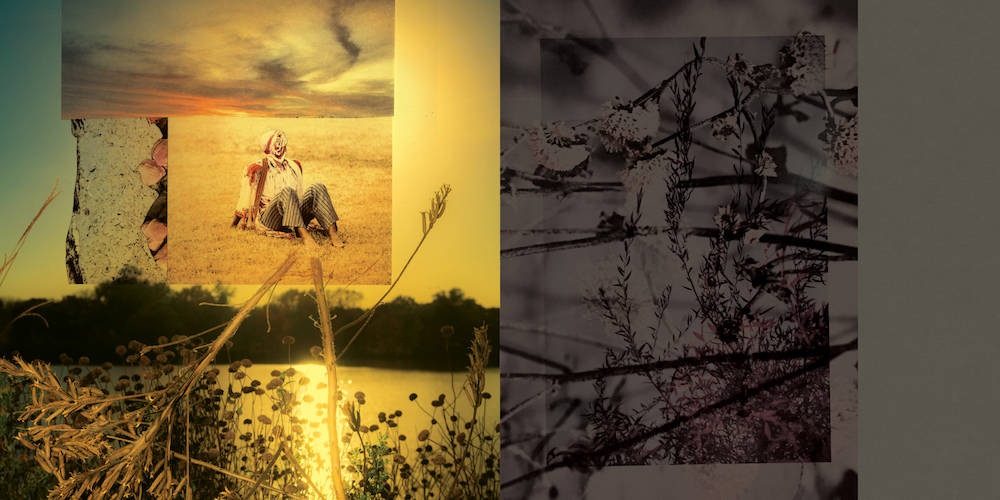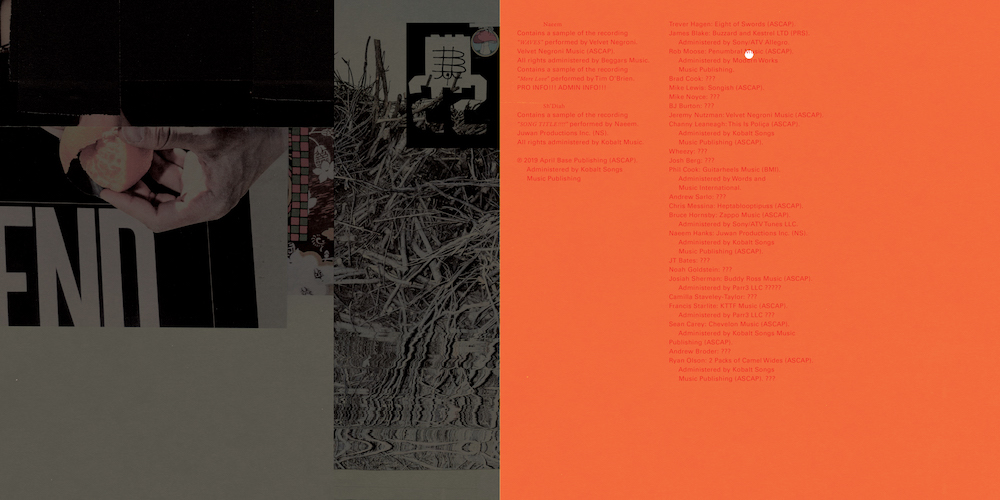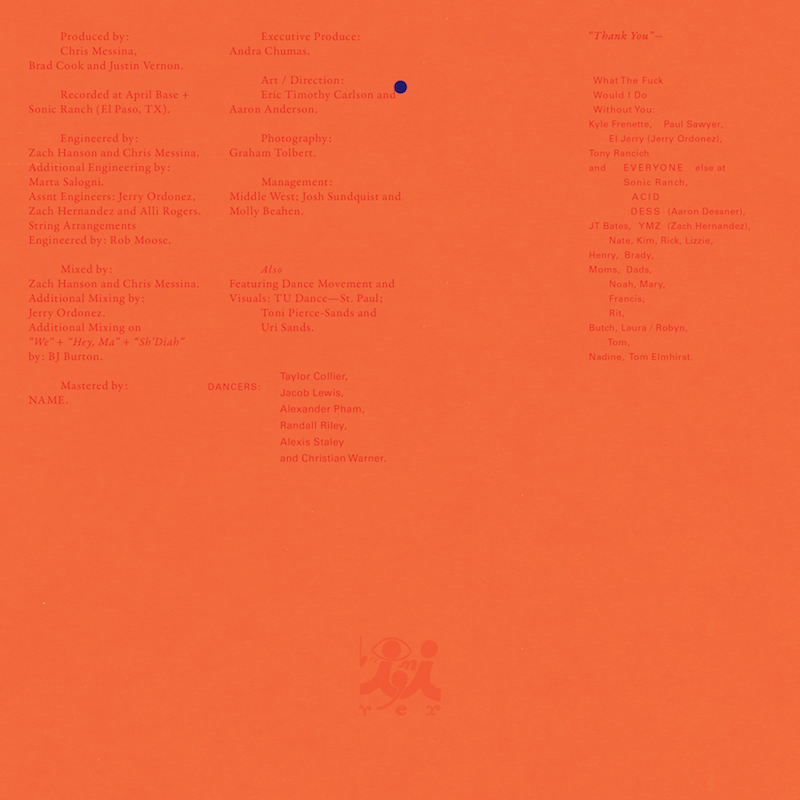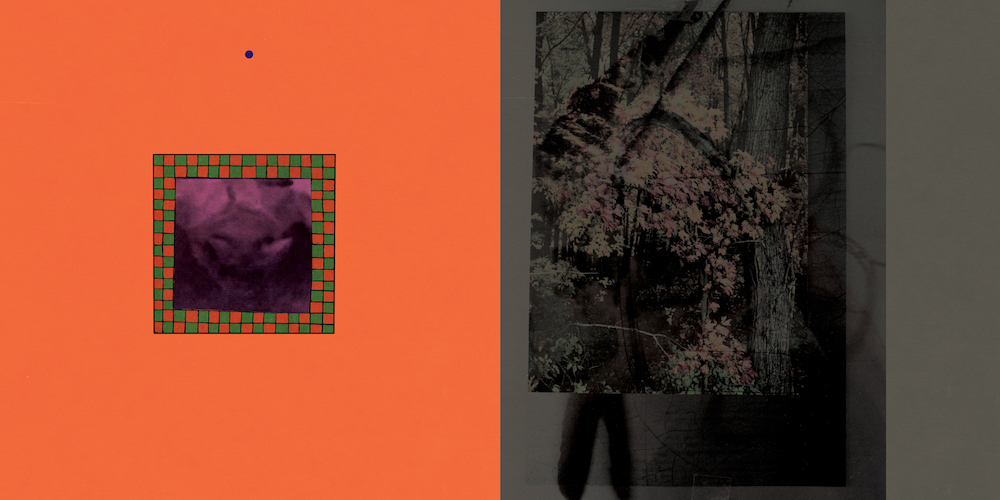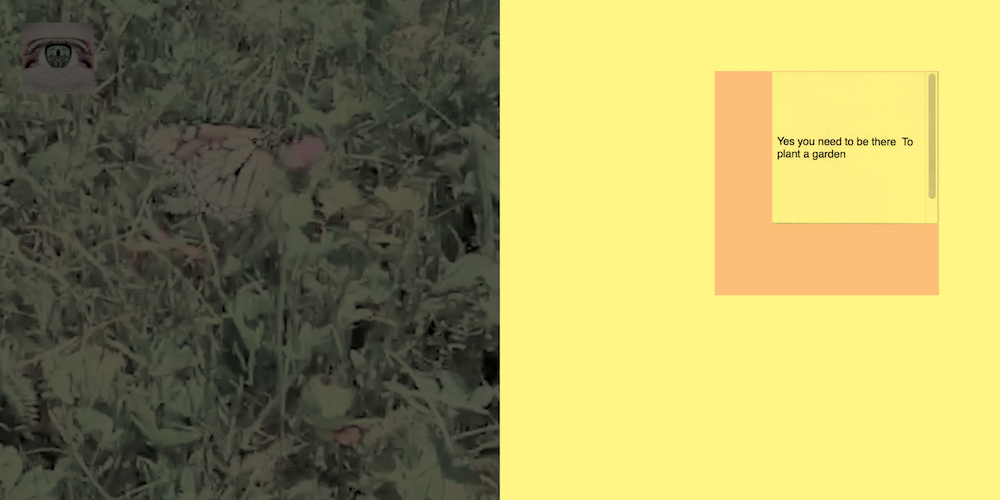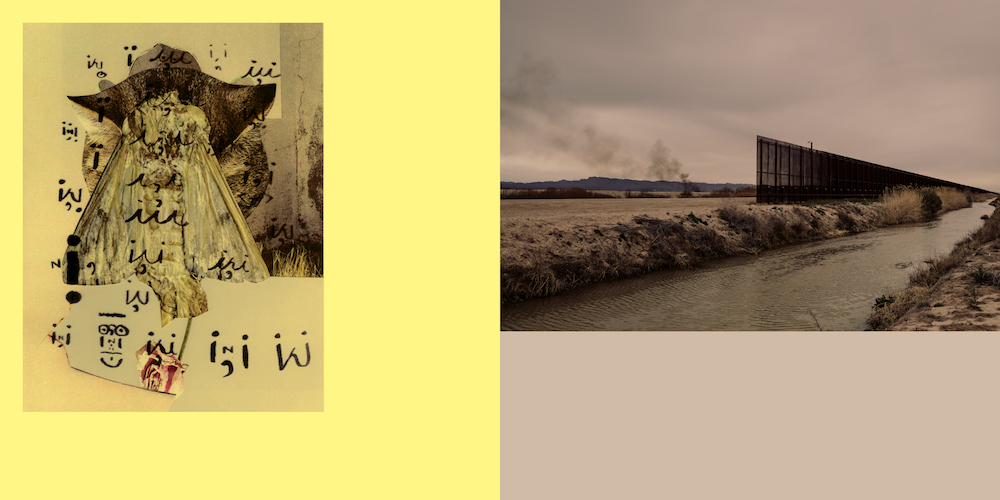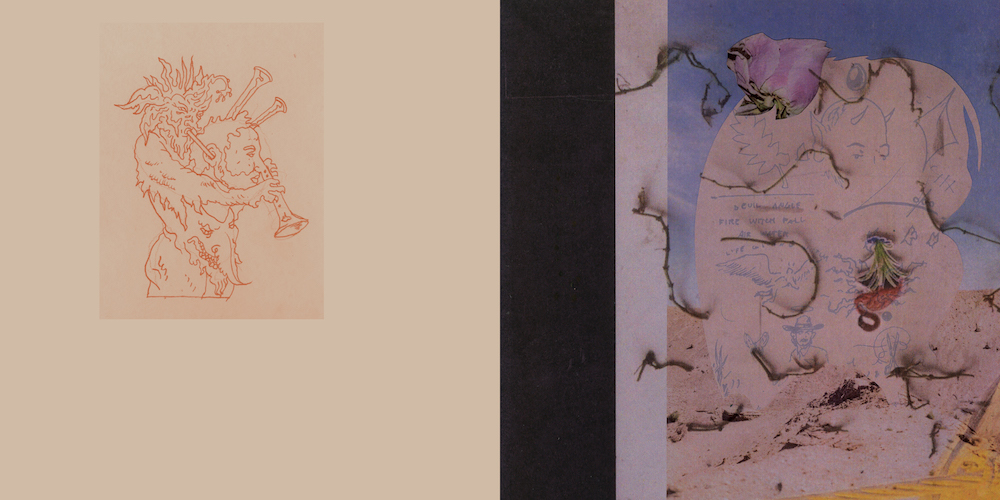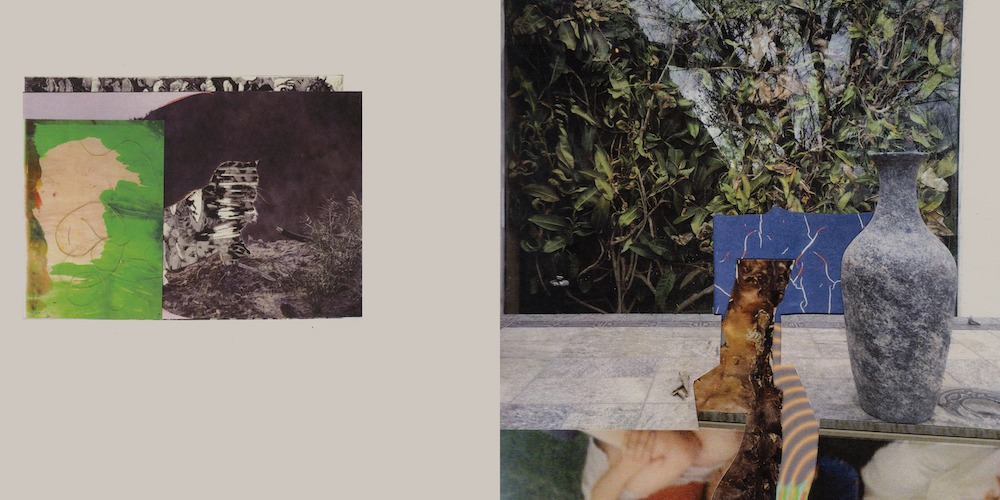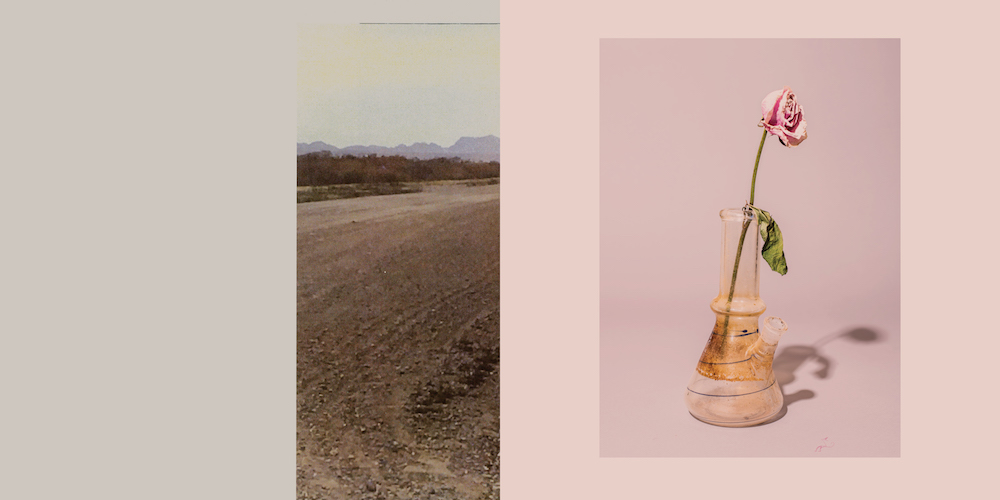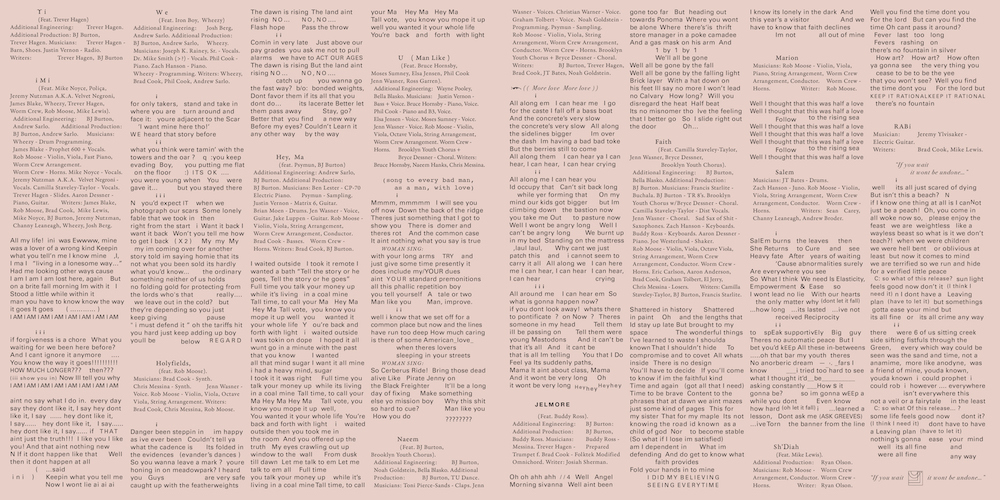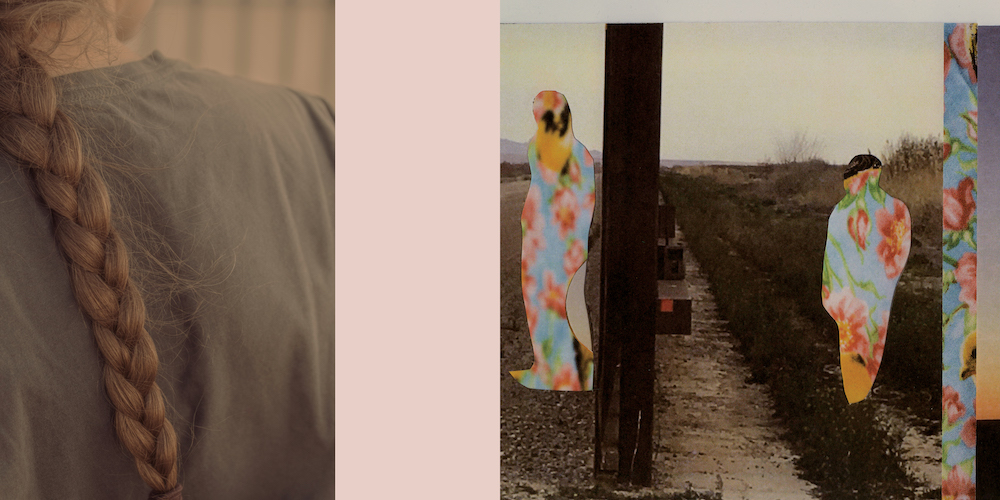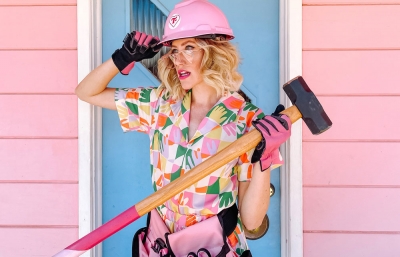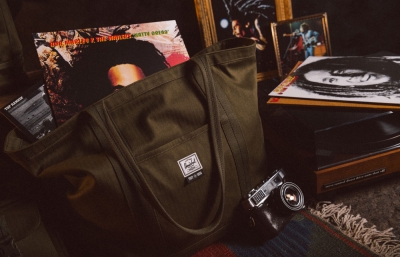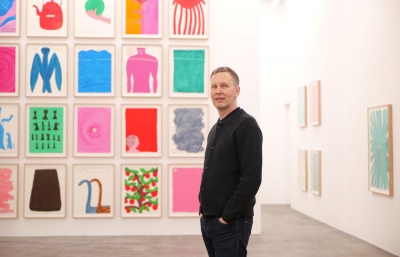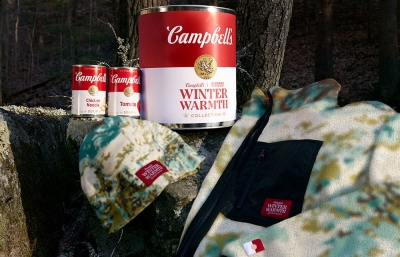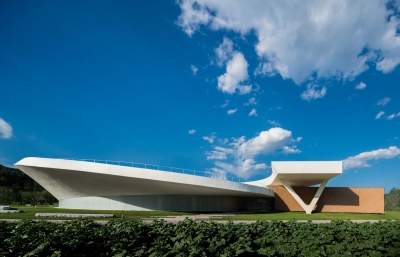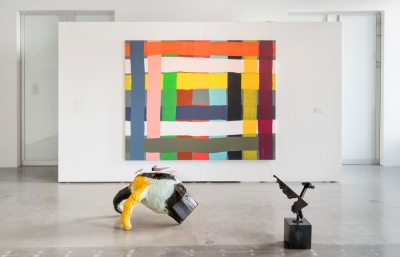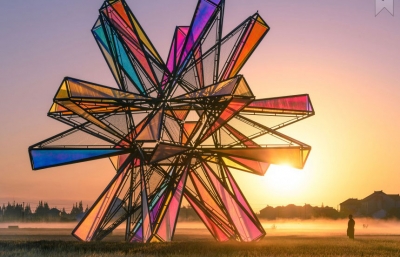This summer, as the early rumblings and tracks began to emerge from the newest album by Wisconsin-based band, Bon Iver, there emerged a groundswell perception that what was once considered a one-man band had truly become a collective. The one man, Justin Vernon, is the acknowledged conductor of collected ideas and talent, a role that suits him in what has become one of the most special bands from America in the 21st Century. In an era where collaboration is king, Bon Iver feels like the antithesis of hype-culture and more the embodiment of an edgy sense of artistic camaraderie, from songwriting to musicianship, and of course, the art that suffuses the band and the illustrative identity of the songs.
Brooklyn-based artist Eric Timothy Carlson has made the artwork and visuals for the last two Bon Iver albums, 2016’s cryptic yet out-of-this-world folk 22, A Million and the most recent i,i, a warmer yet continually experimental set of songs. Each track on i,i was conceived with specific videos and visuals enhanced by an assortment of art made during the album’s creation. Carlson was embedded in the process, working in and around collage art that was a culmination of the ideas and sounds surrounding him.
As Bon Iver will go out on tour this fall, alongside a brand new release with Spotify which worked with the band to launch an immersive online experience “Viisualiizer” to highlight the listening experience of the new album. For this week's Juxtapoz Sound & Vision we talked with Carlson about the process of collaboration (especially on the collages with Aaron Anderson and Graham Tolbert), how the final cover was selected and how being immersed in a project creates the fullest outcome.
September 1, 2019: Bon Iver, i,i (August 9, 2019)
Cover artwork by Eric Timothy Carlson

Evan Pricco: As Bon Iver starts going on tour, do you still participate with an aspect of art direction?
Eric Timothy Carlson: I started with them, working towards the 22, A Million album, and when that wrapped up, I seemed to land a position art directing with the band, and so, coming into this album, i,i, it was a pretty natural progression. I assume things will largely continue in that way now. Wrapping up the album and all the videos was definitely the last push of this summer. Then, as soon as you finish, it goes into all the merch and t-shirts and posters. I do all the tour poster stuff, and from there, more art print, screen print pieces. There's a handful of projects that we developed in the process of working on the album art and the videos that we were sitting on, as well.
We've been working with this dance company in Saint Paul, TU Dance, and a bunch of the lyric videos for the album feature them. But, there's a lot of material that we've produced, a whole body of work that we're still processing, and we're excited to see what we can make with it all. So yeah, definitely have some work to continue with them, for sure.
I like using the term “they” in thinking of Bon Iver as more of a group, because I think most people associate Bon Iver with Justin Vernon. And Justin has been so vocal, especially around this album, that this is a band project. This is a group. This is a collective. I wonder, for you as somebody who's working on visual aspects with the band, how early you are introduced to the process? Are you brought in when songs are being written or when the songs are being created? When do you get an inkling of what the sound might be?
This was established in the process of working towards 22, A Million, and reestablished in i,i where it was kind of exciting to bring me into the studio to see where it's at. In this case, probably two years ago, there was already a smattering of songs, and some of the stuff had been around for a few years, and some of the stuff was brand new, playing it all in a room together. I was definitely brought on early on, when you hear just the sketches of a song. I remember this moment: I was painting a barn with Justin and listening to music and there was a moment in this song where he's like, “I,I. That's a good name for an album.” This was two years ago. So, I was around not only in the middle, but from the start, really.
So, with the band, we spend a period of time just kind of thinking, talking and building a dialogue around what the songs, lyrics and visuals can be. And then there's probably a few months of noticing how the music is evolving, and noticing where the visual language can come from. Then probably six months of really kind of hitting the work pretty hard.
As an artist, do you feel like there's pressure knowing that you're part of the process from the beginning? Or is it more liberating in saying to yourself, “I’m actually part of this from the early sketches and I have an idea of where this is going." Would you prefer for it to arrive as one finished product: here are the songs, go make the art from this?
I think they end up just being two really different scenarios. I certainly work with plenty of projects where you kind of get a thing put in front of you and there's a certain equation you're given, and that's what you have to work with. And of course, the majority of projects really happen with a much quicker turnaround where a lot of stuff has to happen in a month or two. If someone gives you three months, that's so huge. People ask for stuff in a week, and sometimes that's funny and fun and sometimes it's kind of like inappropriate.
Inappropriate, I like that term.
Inappropriate, yeah. You're like, I don't think you know what you're asking anyone to be involved with when you give them that kind of timeline. But having a project where you do really get to be involved in the conversation and be a part of things growing and building … that's a beautiful scenario.
The pressure doesn't exist until you really kind of have to make decisions. So in a way, it's such a fun, interesting, and powerful luxury to have these kind of longer-term, chunk of life projects where you get to work without having to make decisions. It's not about knowing what you're doing. It's kind of about working and developing a world of artwork that happens at the same time that's interrelated. Of course, it's about the music and the people, but also kind of gets to be about the artwork in the process. It's a lot easier for the work to become part of your life when you're investing that kind of time frame to it. So it's powerful in a way that doesn't necessarily happen any otherwise.
You almost become part of the band, especially in this day and age where you're creating a video and a visual representation to each song on top of art packaging. I guess that's one of the nice new things that you can do with YouTube and Spotify, and these services where each track exists outside of an album as a whole. It must be exciting for you as a visual creator after being embedded with the band.
Certainly. I love the opportunity to work like that and address the whole in so many ways. I really love an album experience and love to listen to things that you can really put on and listen in such totality. And, of course, there's singles and tracks, and the release of pieces out into the world as a whole mechanism in itself, the way that music works now in a hyper sense.
Again, it's a powerful opportunity to just really make it a comprehensive body of work, especially with an artist and a group of artists who are really capable of thinking about projects at that scale and intricacy. Different songs kind of elaborating on previous pieces and then you have the opportunity to do that with the artwork. When you watch all the videos or look at all the LP artwork, you really start to be able to piece things together without it being like a puzzle. It naturally lets somebody experience the whole world and get familiar with the language and be able to understand things that might not inform if just seen in one aspect.
When do you go okay, the album cover, I got it!? Was that the last piece of the puzzle or does it come midway through? I mean, how do you start picking what visuals will go with what?
In the case of the last two albums, the album cover has arrived certainly later in the game and something that's been a very intentional conversation from the start. I remember some of the first times talking about it, making specific note to myself about not deciding what the album cover is at this point. I don't want to pretend that we know what it needs to be or what it should be. That's a less interesting way of approaching it, given this opportunity to develop the bigger body of work.
I feel it's exciting and interesting to really engage in every song, as well as the conversations while things are happening, collecting as much as possible from those processes, pulling out the symbolism, content and conversations, be they really explicit visual references or vibe references. You can really just build catalogs of images that are song-specific and then a whole umbrella of specific bodies of material. Once you get to a certain place with all that, you need to come up with ways to process and work with it, maybe a bunch of pencil drawings, or, in the case of i,i, introducing a lot of photography. So, like hundreds of photographs and hundreds of drawings, hundreds of smartphone video clips just produce this massive well of content. So then, how do you start bringing it all together, let alone collaborating with the dancers?
But pretty early on in this process, I was sharing a body of collage work with the band that I've been working with for the last couple of years, something that's been part of my practice for a long time. And I got a text message shortly after a studio visit with Justin, and it was like, “Collage is the thing, right?” Yeah, collage is the thing.
What was also made very clear was focusing on developing multiple bodies of fairly disparate materials for i,i, where 22, A Million really honed in on the drawings and those iconographies. This time it was exciting to think: “We're going to have the dancers, we're going to have photography and it's going to be about all of the faces and players and contributors in this straight up, portraiture way,” like portraiture of the musical instruments within their environments, while also including symbolism, the drawing, the songs and titles. As chaotically wide as possible. So then the process was collage, like how to have a multitude of disparate elements and give them cohesion, and make it feel good and not the messy thing that it naturally is, you know?
Did this album feel more natural because 22, A Million felt like a little bit more cryptic? Organic is not necessarily the word I want to use, but this one feels a little bit less obscure. That's the simplest way to put it, but there's still this fun, sort of mystery to his lyrics and the words being used.
I think there's certainly a practice of openness being applied. Bon Iver and Justin and the energy has been a little, naturally, less cryptic. So there's an openness and there's almost a documentary quality to some of the processes of creating the content with the photography, almost like journaling through the drawings and writing that happens in context of the recording and the process of making music.
Which is only really able to be done if you are embedded with a band during the process.
Yeah, totally, totally. I mean I am certainly from a school of process. I apply it to so much of really anything that I do and I love a simple gesture, which can kind of be the forward facing piece, that can be so strong. Think of some of your favorite artworks and some of your favorite album covers and songs: There can be a really simple beat or just be one solid color, and that can be it. But I like to get there by working really hard at figuring out the simple gesture. You can choose one, but sometimes you have to do a hundred to arrive at that decision.
For choosing the album cover, we arrived at collage. How that ends up working is taking all these different stacks of material and figuring out how to make them function in a collage medium format and seeing what comes out. Then again, you have a 150, 200 options and there's these things that can kind of “sing,” so getting to a point where this handful of pieces starts to be exciting. It was a matter of just sharing them with Justin and the others, but there was a note from Brad Cook, the producer-engineer of i,i,and he was like, "I can't stop thinking about this one." That ends up being the vertical collage on the cover.
There's the incense smoke over the desert is the vertical collage that's on a clear sleeve on the cover. The back cover, is the dancer, Taylor, a still from a video and a simple drawing of a circle around her. So those are the three primary cover images that compose the final cover. We did this kind of like transparency treatment for the packaging that gives an experience of this overarching collection of material, because at every moment you want people who see the album to have the experience of a nearly endless array. You have to realize that there's piles and piles of stuff behind it...
Okay, last question. You lived with and saw the evolution of this album. What's your favorite moment on i,i?
My gut reaction is “RABi,” the last song on the album that is such a beautiful song to me. It's fun and playful, yet somehow seems all twisted and psychedelic in the middle. Between that and “iMi,” which also just such an epic collage of music, I feel it speaks about what Bon Iver's project really is.
Follow Bon Iver's tour dates here: https://boniver.org/tour/

